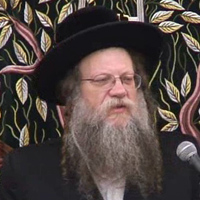- Shabbat and Holidays
- The Laws of Purim
38
First, the passage describing the execution of Haman’s ten sons is written in the Megilla in the format of a song. However, this format is unlike the format that appears in other biblical songs, such as the Song at the Sea, where the words and spaces are interwoven. The execution of Haman’s sons, in contrast, is written in a straight and organized fashion. On every line, one word is written on each of the two ends, with a space left in the middle. Thus, the names of the ten sons are written on the right side and the Hebrew word et, which connects the names, is written repeatedly on the left side (Megilla 16b, SA 691:3). The explanation is as follows. The purpose of all other songs is to convey the extent of the salvation that Israel experienced; therefore, they are written in a spacious and expansive format. The song describing the execution of Haman’s sons, however, expresses the joy we feel over the fact that they were utterly destroyed and that strict justice was meted out; therefore, it is written in a closed, linear style (Maharal, Or Ĥadash 9:10).
One must make an effort to read all the names in a single breath, to demonstrate that their souls departed from their bodies simultaneously. If one fails to do this, he has nonetheless fulfilled his obligation, be-di’avad. The letter vav in the name Vaizata is written higher than the other letters, to teach that Haman’s sons were all hanged together (Megilla 16b; SA 690:15, 691:4). The point is that the foundation of Israel’s faith is the existence of one God. The Amalekites oppose this belief and hate the Jews. Thus, when they are eliminated, God’s oneness is revealed to the world. Therefore, when Haman’s sons were punished, they died as one, since their deaths confirmed our belief in God’s oneness (Maharal, loc. cit.).
After the Megilla reading, one must recite, "Cursed is Haman, blessed is Mordechai; cursed is Zeresh, blessed is Esther; cursed are all the wicked people, blessed are all the righteous people; and Ĥarvona, too, is remembered for good (y. Megilla 3:7; SA 690:16).
In the time of the Rishonim, a custom began to spread among both the children and the adults, to bang on a surface when Haman’s name is read. Apparently, they wanted to express their hatred for wicked people and their joy over their downfall. Even though there is no source for this practice, Rema writes, "One should not abolish or deride any custom, for it was not established for naught" (690:17). However, some Rishonim disregard the custom, and some Aĥaronim even oppose it, because the noise is liable to prevent the listeners from fulfilling their obligation to read the Megilla (as explained above in section 10). In practice, one may continue following the custom of "beating" Haman, as long as it is assured that everyone can hear the entire Megilla properly. 18
1 Repliesin 1 Discussions
L Loretta Thomas |12 Tishri 5785 Dalphon one of the 10 Sons of Haman
Hello Rabbi. My name is Loretta. I'm doing a paper on Dalphon one of the 10. Sons of Haman. Would you . please be kindly of to tell me of Dalphon,, one of the 10 Sons of Haman and why his name means Weeping and crying
10. The Mitzva to Drink
Chapter 16: The Mitzvot of Joy and Kindness
Rabbi Eliezer Melamed | Tevet 5 5782
14. Can a Drunk or Tipsy Person Recite Berakhot and Pray Ma’ariv?
Chapter 16: The Mitzvot of Joy and Kindness
Rabbi Eliezer Melamed | Tevet 5 5782

Early Reading of Megillat Esther
Rabbi Daniel Mann | Adar II 6 5776

Matanos La’evyonim
Rabbi Yirmiyohu Kaganoff | 5771
Korbanot – The Passages of the Sacrificial Offerings
Chapter thirteen-part one
Rabbi Eliezer Melamed | 5775

Of Umbrellas, Trees and Other Kohen Concerns
Rabbi Yirmiyohu Kaganoff | 5769

Of Umbrellas, Trees and Other Kohen Concerns
Rabbi Yirmiyohu Kaganoff | 5769






